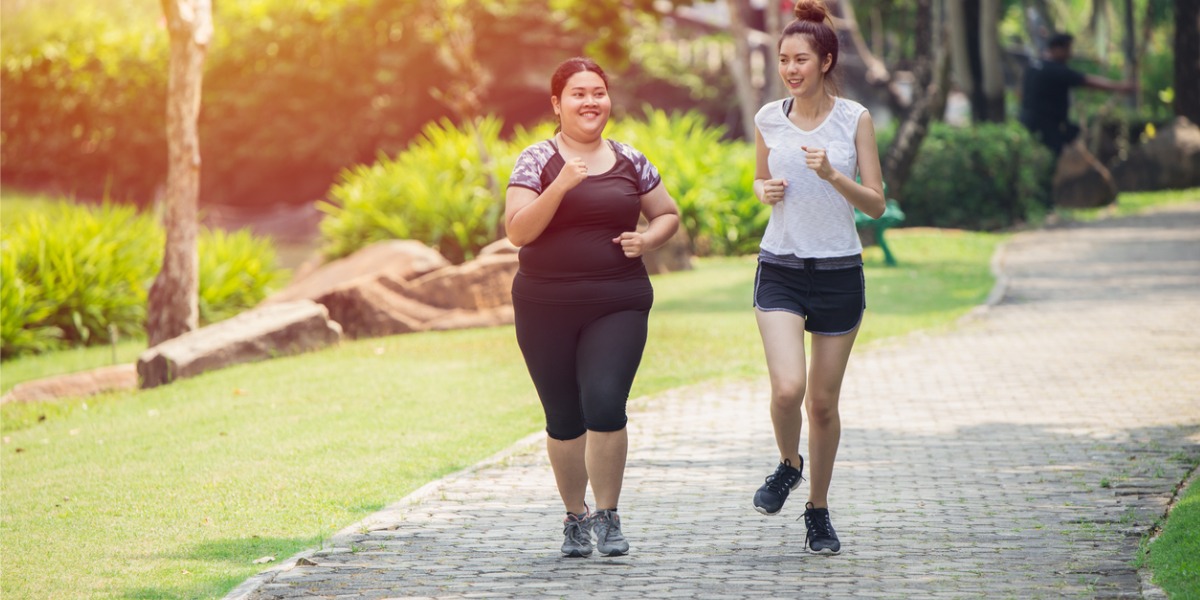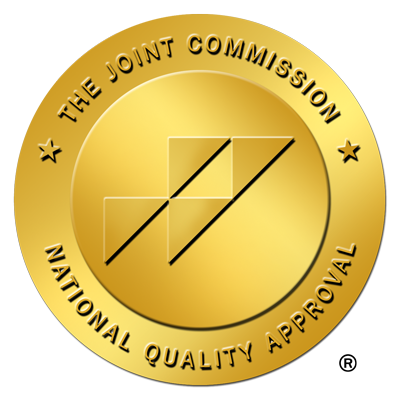We published an article recently called “Improving Adolescent Mental Health: A National Challenge” which addressed the current state of mental health among adolescents in the U.S. and discussed a variety of approaches to supporting the psychological and emotional health of our youth, including the addition of physical activity to treatment for children, adolescents, and young adults facing mental health challenges.
That’s why the article “The Association Between Physical Activity, Self-Efficacy, Stress Self-Management and Mental Health Among Adolescents” caught our attention. We wanted to gather more data on treatment approaches that can help our children, adolescents, and adults in their time of need.
It’s important to consider low-cost, low-impact lifestyle options when thinking about mental health treatment. Rates of depression, anxiety, and other mental health disorders are on the rise, not only in the United States, but also around the world.
According to the World Health Organization (WHO):
- 14% of people ages 10-19 worldwide experience mental health conditions
- Mental health disorders account for 13% of the global burden of disease for people ages 10-19
- Depression, anxiety, and behavioral disorders are leading causes of illness and disability among adolescents.
In addition, studies show that worldwide, depression alone may become the primary cause of disability and reduced life expectancy by the year 2030. Those statistics illustrate the scope of the problem around the world. Now let’s look at the prevalence of mental health problems in the U.S., as reported in the 2023 Youth Risk Behavior Surveillance System (YRBSS) and the 2022 National Survey on Drug Use and Health.
Mental Among Adolescents 12-17: Facts and Figures
- Major depressive episode (MDE) in past year: 19.5%
- MDE with severe impairment in past year ages 12-17: 14.6%
- Persistent Feelings of Sadness or Hopelessness During the Past Year: 36%
- Poor Mental Health in the Past Year: 29%
- Had serious thoughts of suicide in the past year: 22%
- Made a suicide plan in the past year: 18%
- Attempted suicide in the past year: 10%
That’s where we are right now – and that’s why this research is important to explore. If we can find ways to improve the symptoms of mental health disorders that are efficient, effective, and accessible, we can improve the lives of more people.
Let’s take a look at that study.
Physical Activity: Can it Improve Mental Health?
Researchers gathered data from online surveys completed by 400 middle school students with an average age of 14 years old. The surveys included detailed questions on the following topics:
- Physical Activity: frequency and duration scored with the Health Promotion Lifestyle Profile (HPLP)
- Self-efficacy: measured with the General Self-Efficacy Scale (GSES)
- Stress management: measure with the HPLP stress management subscale
- Mental health: measured with the Kessler 10 Psychological Distress Scale (K10), which measures non-specific mental health states with questions about feelings like anxiety/depression in the four weeks before taking the survey
To ensure we’re on the same page, we’ll define each of these terms, starting with the first one, which is also the easiest to define. Physical activity includes things we do, above and beyond daily necessities, that raise our heart rate and create work for our bones, muscles, and the various systems in our body. The Centers for Disease Control (CDC) describes the general health benefits of regular exercise:
CDC: Benefits of Exercise
- Reduces chances of developing various types of cancer
- Overall benefits for the brain:
- Improved executive function
- Improved sleep
- Increases sense of wellbeing
- Specific benefits for children and adolescents:
- Better bone health
- Appropriate age/height/weight relationship
- Improved executive function
- General benefits for all demographic groups:
- Heart disease
- Type II diabetes
- Hypertension
- Colon cancer
- Reduces symptoms of anxiety and depression
- Strengthens bones, muscles, and joints
- Helps control weight
Next, the term self-efficacy. The psychologist who coined the term, Albert Bandura, defines it as follows:
“Self-efficacy is the belief in one’s capabilities to organize and execute the courses of action required to manage prospective situations.”
In general, people with a high level of self-efficacy are:
- Active and engaged consistently across life domains
- Connected to their interests and passions
- Able to bounce back from setback/problems quickly
- Skilled at seeing problems as challenges rather than roadblocks
People with high levels of self-efficacy, in most cases, also have robust stress management skills. That’s what we’ll define next. Like physical activity, stress management is easy to define because the definition is in the phrase itself. In other words, stress management is exactly what it sounds like: the set of tools and techniques people use to mitigate the impact of stress on wellbeing and happiness.
In general, people with solid stress management skills can:
- Tolerate psychologically and emotionally stressful situations
- Maintain perspective while under stress
- Make decisions while under stress
- Return to balance/stability after a stressful experience
Evidence shows that people with a high level of self-efficacy and robust stress management skills often report positive mental health. This study examines the impact of physical activity on mental health and the relationships between physical activity, self-efficacy, stress management, and mental health.
Let’s take a look at what the researchers found.
Physical Activity, Adolescents, Mental Health: The Results
First, let’s look at whether physical activity is related to the other three measures in the study: self-efficacy, stress management, and mental health. In their first round of statistical analysis, survey answers among students showed that physical activity correlates strongly and positively with:
- Self-efficacy
- Stress management
- Mental health
That means the more physical activity a student reported on the survey, the higher their reported levels or self-efficacy, stress management skills, and positive mental health. Next, survey answers from students showed strong self-efficacy correlates strongly and positively with:
- Stress management
- Mental health
Again, that means the higher the reported level of self-efficacy, the higher the reported stress management skills and positive mental health. Survey responses also showed a strong, positive correlation between robust stress management skills and self-efficacy. What that means is that the more robust the stress management skills, the higher the belief in the ability handle any situations – stressful or otherwise – that may arise.
This is where the results of this study get interesting. During the next level of analysis, researchers analyzed the direct and indirect correlations between physical activity, self-efficacy, stress management, and mental health. It’s easy to assume that all these correlations are direct, meaning physical activity has a direct impact on mental health, for instance.
However, the research showed something else:
- Physical activity correlated significantly and directly with self-efficacy and stress management
- Self-efficacy correlated significantly and directly with stress management
- Self-efficacy correlated significantly and directly with mental health
- Stress management correlated significantly and directly with mental health
Here are the interesting observations:
- Physical activity did not correlated directly with mental health
- Physical activity correlated directly with self-efficacy and stress management
- Self-efficacy and stress management correlated directly with mental health
- Physical activity, therefore, correlated indirectly with mental health, mediated by self-efficacy and stress management
We’ll explain below.
What The Results Mean
It’s tempting to jump to conclusions when we hear or read that physical activity has a positive effect on mental health. In some cases, reading information like that causes people to think physical activity alone might be an effective treatment for mental health disorders. In some cases, that may be true. Recent research shows that for some people with mild or moderate depression, physical activity – running, in one study – combined with therapy was as effective as medication combined with therapy.
Studies like that are helpful, but they don’t tell the whole story. For instance, why does running help mitigate the symptoms of depression?
In this study, researchers showed data that hints at the why behind the effect of physical activity on positive mental health – that’s what they mean when they say the impact of physical activity on mental health is mediated by self-efficacy and stress management skills.
In this study, students who reported high levels of self-efficacy and stress management skills reported positive mental health in the absence of high levels of physical activity, but not as high as students who engaged in physical activity. On the other hand, students who engaged in high levels of physical activity but did not report high self-efficacy or stress management skills did not report high levels of positive mental health.
That’s the real takeaway from this study on 14-year-olds: physical activity without self-efficacy or stress management skills may not have an impact on mental health, but when physical activity is present alongside self-efficacy and stress management skills, then physical activity has a strong impact on mental health, mediated – i.e. with the help of – the presence of self-efficacy and stress management skills.
Holistic, Integrated Treatment
We understand these results: that’s why we take a holistic, all-of-the-above approach to mental health treatment. We know that a combination of approaches is the best template for treating children and adolescents, and that a combination that works for one person might not work for another. The information in this study reminds us that lifestyle changes alone are likely insufficient to reduce mental health symptoms, and that therapy – which often includes techniques to improve self-efficacy and stress management – combined with education, family support, and medication (if necessary), is the most effective way to address mental health issues and mental health disorders in children, adolescents, and adults.
How to Find Support: Online Resources for Families
To find help, call or email us here at BACA, or consult one of these online resources:
- The American Academy of Child and Adolescent Psychiatry (AACAP) is an excellent resource for locating licensed and qualified psychiatrists, therapists, and counselors in your area. Their treatment finder is convenient and easy to use.
- The National Institute of Mental Health (NIMH) maintains a page for youth, adolescent, and family mental health.
- The National Alliance on Mental Illness provides reliable resources for families seeking treatment and support.




